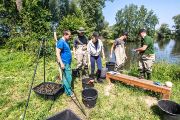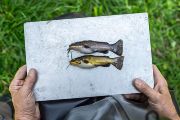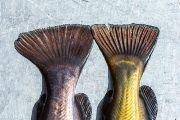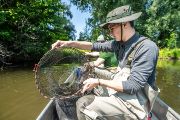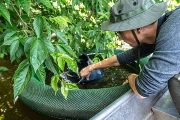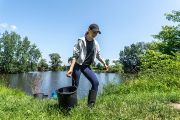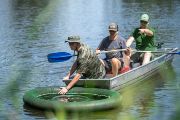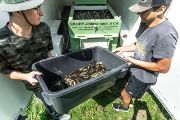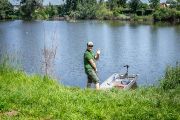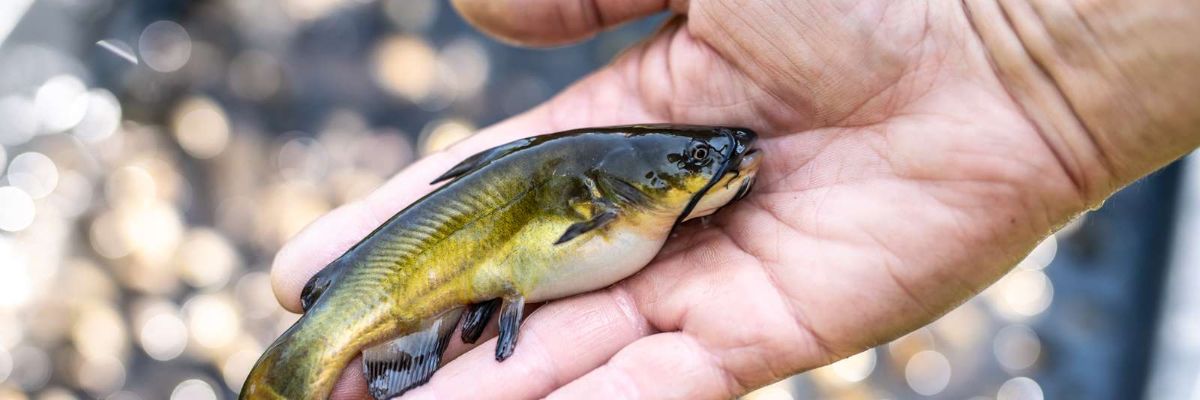
PHOTO STORY: The invasive black bullhead catfish threatens Czech fishponds
13. 10. 2025
One of Medek’s fishponds near the Czech town of Kroměříž is a place where the invasive black bullhead catfish reigns beneath the surface. It is a serious threat to native fish and its presence needs to be carefully monitored and controlled. And that’s what researchers from the Institute of Vertebrate Biology of the Czech Academy of Sciences and other institutions are working on. Click on the photos for the photo story, which was first published in the 3/2025 Czech issue of A / Magazine.
Written and prepared by: Markéta Wernerová, External Relations Division, CAO of the CAS
Translated by: Tereza Novická, External Relations Division, CAO of the CAS
Photo: Jana Plavec, External Relations Division, CAO of the CAS
 The text and photos are released for use under the Creative Commons license.
The text and photos are released for use under the Creative Commons license.
Read also
- The secret of termites: Long-lived social insects that live in advanced colonies
- Two ERC Synergy Grants awarded to the Czech Academy of Sciences
- Nine CAS researchers received the 2025 Praemium Academiae and Lumina Quaeruntur
- Step inside the world of research: Week of the Czech Academy of Sciences 2025
- A / Magazine: Bugs, the rusting human body, and beauties from the kingdom of ice
- Rewrite the textbooks – we’ve found a bone; aka When science takes a wild turn
- CAS researchers receive L’Oréal-UNESCO Award and Forbes recognition
- Young scientists discussed economic challenges with Nobel laureates in Lindau
- A cure for cancer? Fighting the climate crisis? Ask the data scientists
- Vice-Presidents of the CAS set priorities for 2025–2029 term
The Czech Academy of Sciences (the CAS)
The mission of the CAS
The primary mission of the CAS is to conduct research in a broad spectrum of natural, technical and social sciences as well as humanities. This research aims to advance progress of scientific knowledge at the international level, considering, however, the specific needs of the Czech society and the national culture.
President of the CAS
Prof. Eva Zažímalová has started her second term of office in May 2021. She is a respected scientist, and a Professor of Plant Anatomy and Physiology.
She is also a part of GCSA of the EU.
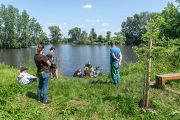
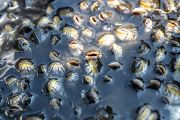
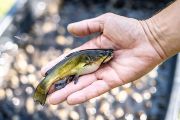
![“Fish farmers have a serious problem with this species of fish. Financial losses can amount to twenty thousand crowns [app. EUR 850] per hectare,” says research team leader Pavel Jurajda from the Institute of Vertebrate Biology of the Czech Academy of Sciences (CAS).](/export/sites/avcr.cz/.content/galerie-obrazku/aktuality/2025/2025_09_19_sumecci-english/04.jpg_311275608.jpg)
